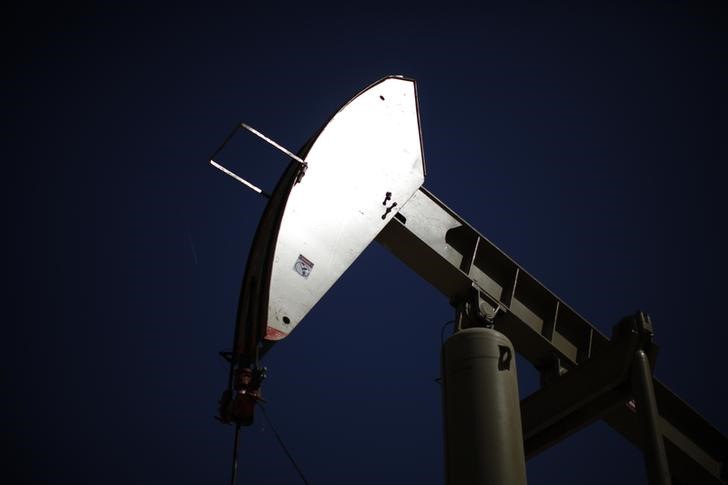By Ayenat Mersie
NEW YORK (Reuters) - Oil fell by more than 2 percent on Monday, pressured by a rise in Russian production, expectations that Saudi Arabia will cut prices of the crude it sends to Asia and a deepening trade spat between China and the United States.
Brent crude (LCOc1) was down $1.44, or 2.1 percent, at $67.90 a barrel by 1:32 p.m. EDT (1832 GMT). That was the lowest level since March 21. U.S. crude (CLc1) lost $1.72, or 2.7 percent, to $63.22, its lowest since March 20.
Trading volumes were lower than normal as some countries were on Easter holiday.
Trade sources told Reuters on Monday that Saudi Arabia is expected to cut prices for all crude grades it sells to Asia in May to reflect weaker prices for its Middle East benchmark Dubai crude.
"There is speculation that the Saudis are going to lower prices for their Asian customers," said Bob Yawger, director of energy futures at Mizuho in New York. "That is not really the kind of thing you do when you want to keep production cuts in place."
Oil has risen from a multi-year low near $27 in January 2016, helped by production cuts led by the Organization of the Petroleum Exporting Countries and Russia, which started in 2017 and are due to run until the end of 2018.
But Russian oil output rose in March despite the output deal, to 10.97 million bpd from 10.95 million bpd in February, Russian energy ministry data showed.
Also, in an escalation of the spat between the world's biggest economies, China increased tariffs by up to 25 percent on 128 U.S. products from Monday.
"Increasing trade friction between China and the U.S. is likely to rock global markets and tarnish bullish sentiment in crude oil markets," said Wang Xiao of Guotai Junan Futures.
Brent crude reached a 2018 high of $71.28 in January but has since struggled to pass that level. Two rallies last week ran out of steam just beyond $71, a chart pattern known as a double top which is usually bearish.
Another bearish factor is Bahrain's discovery of its largest oilfield in decades, analyst John Macaluso of Tyche Capital Advisors said. The field is thought to contain several times the amount of oil produced by the country's existing fields.
Growing U.S. production has also limited price gains.
U.S. crude production rose by 6,000 bpd in January to 9.964 million bpd, the Energy Information Administration said in a monthly report on Friday.
U.S.-Iranian tensions lent some support to crude prices.
"The Iranian factor is going to be a very significant input for the next four weeks," said Olivier Jakob of Petromatrix.

U.S. President Donald Trump threatened to pull out of a 2015 international nuclear deal with Tehran under which Iranian oil exports have risen. He has given European signatories a May 12 deadline to fix the deal.